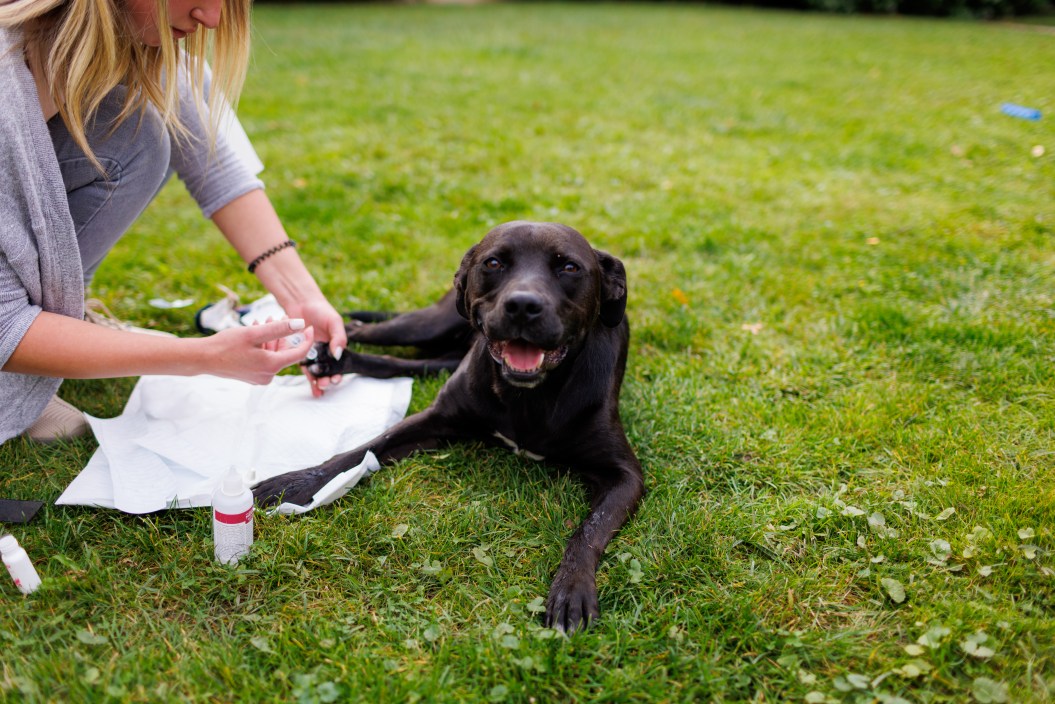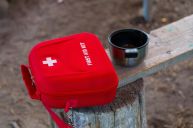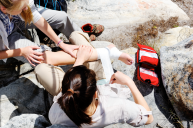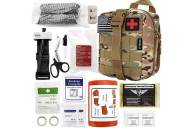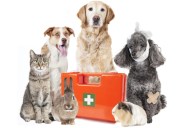I remember the first (and last) time I went on an outdoor adventure without a first aid kit.
I was a sophomore in college, camping with a group of fellow rugby players. Of course, we were completely used to nicks, cuts, and bruises—they are, after all, occupational hazards. But somehow, I managed to slice open my finger while attempting to pry open a metal can. I wound up pouring vodka all over it and wrapping the digit with a filthy, grass-stained sock that had just seen over an hour and a half of battle on a muddy pitch.
Now, imagine if I were furry, four-legged, and couldn't communicate—but my paw had the same gash. I'd need my humans to be more prepared for a pet emergency than I was for my own mishap.
READ MORE: Here's When to Worry If Your Dog Won't Stop Whining
Why Your Dog Needs a First Aid Kit
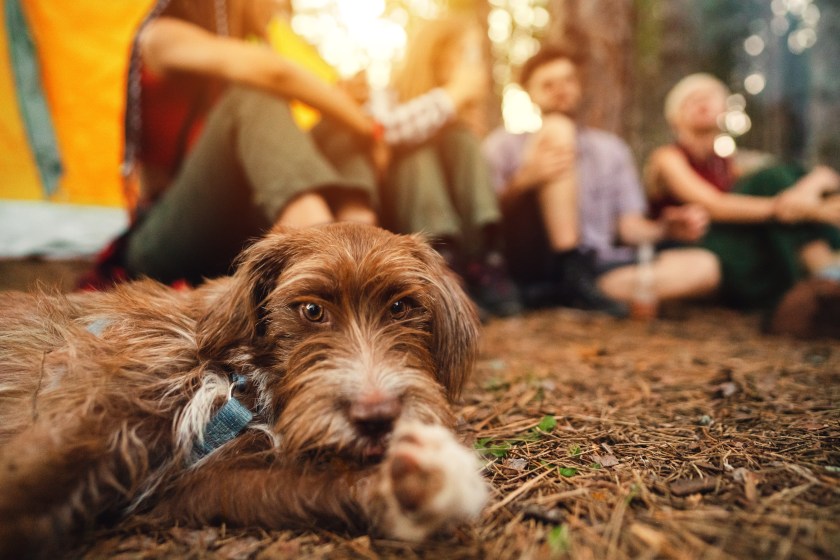
Getty Images, SrdjanPav
There are so many ways your pup can hurt itself while you're out hiking, hunting, fishing, or camping. To prepare, you'll want a pet first aid kit "any time you're going to be in a remote area or somewhere you won't have easy access to veterinary care," says Dr. Katie Leslie, a veterinarian at Park Veterinary Hospital in Durham, North Carolina.
Having a first aid kit for your dog ensures "you can at least provide initial care for wounds, bites, stings, and more," she says.
Some items in your own first aid kit might overlap with your dog's, but there are specific items you'll need just for your pet. Here is a non-exhaustive list of supplies you'll likely need in case of an emergency that you'll want to include in a first aid kit for a dog.
First Aid Kit Supplies For a Dog
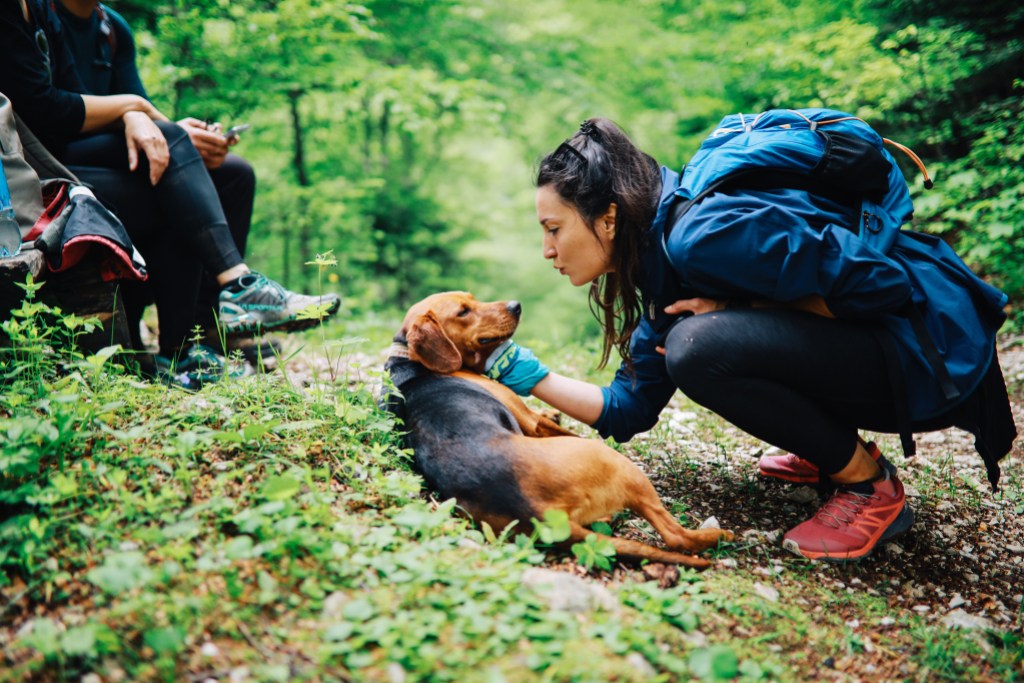
Getty
- Absorbent gauze pads. These can be used to hold pressure on wounds and blot dry after rinsing/cleansing. Non-stick gauze pads are useful to cover wounds for bandaging.
- Self-adhesive bandage/or bandage adhesive tape. Use this to bandage wounds on limbs or tails.
- Saline solution. If you're in a pinch and need an antiseptic to cleanse debris from wounds, this is what you'll need. "An over-the-counter saline eyewash or contact solution is easiest," Leslie says.
- Antibiotic ointment (i.e., Neosporin). Dogs can use it, too! This ointment can be applied to superficial wounds such as minor scrapes and cuts, although not to deep gashes.
- Benadryl or generic diphenhydramine. Tried and true, this helps to reduce a histamine response to an allergen. Make sure you know your pet's proper dose.
- A blanket or towel. "For some dogs, wrapping or bundling them in a towel can be comforting when they're stressed. A blanket can also provide warmth for an injured pet if you're in a cold environment," Leslie says. Moreover, clean towels can be used to apply pressure to a severely bleeding wound.
- Bandage scissors. Some bandages can be ripped by hand, but not all can.
- Tweezers. These can be used for tick removal or splinters, especially in a dog's paws.
- Hydrogen peroxide 3%. For inducing vomiting if needed.
- Oral syringe or turkey baster. For administering hydrogen peroxide if needed.
- Small flashlight. One can't overstate how important it is to clearly see the wound in case you're caught out after dark.
- Disposable gloves. These will keep both you and your pup from swapping bacteria.
- A carrying harness. This is medium or large dogs that you wouldn't be able to carry down a mountain for miles in an emergency. (We love the Fido Airlift.)
- Paperwork. This is often overlooked, but a phone number or directions to the nearest emergency vet is paramount. Plus, your dog's vaccine certificate and medical records (if they have ongoing medical conditions) are important to have on hand, as well as a phone number for a pet poison control center.
- Cloth muzzle. "Any pet under extreme stress or in pain can bite, so it's good to have a muzzle on hand just in case," Leslie cautions.
- A spare collar and leash, bottled water, and a travel bowl are always useful.
READ MORE: UV Sunglasses for Dogs: 8 Options to Protect Your Pooch's Peepers
